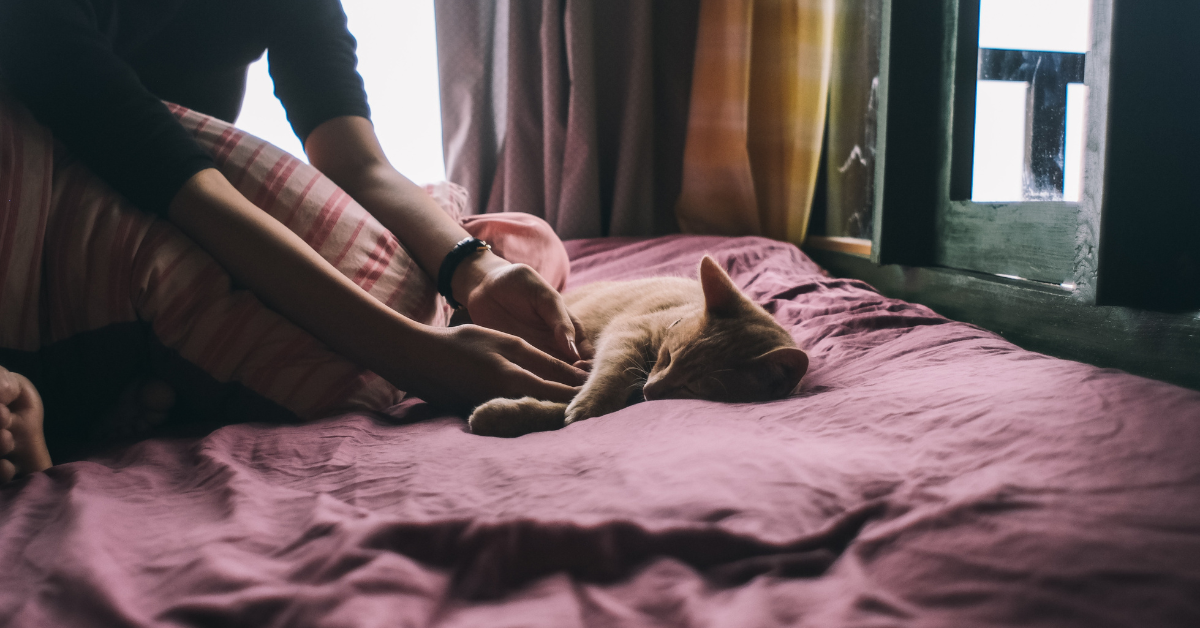
Helping a Pet Grieve
When a beloved pet passes away, it is undeniably difficult to move forward. It can feel impossible to understand your emotions, find words to speak and take care of yourself and your family. And what about the surviving pets in your household? How do you support the non-human members of your family through the grieving process?
Firstly, let your pet grieve in his own way. Just as your furry, feathery, or scaly friend is unique, so is his manner of mourning. There is no one “right” way to be sad and to work through a death. Your pet’s type of grief will depend on his own personality as much as on his relationship with his deceased animal companion.
Potential signs of grief in pets may include:
- Changes in appetite/eating routine
- Changes in personality (Some pets may become withdrawn, others may seek extra attention.)
- Searching for the deceased pet
- Whining, howling, crying, barking, and other changes in vocalizations
- Lethargy/sleep problems
- Sad demeanor
- Aggression
- Changes in grooming habits, especially with cats
No matter what grief looks like in your family, be there for your pet, to provide love and comfort. Spend time with your pet: cuddling, playing, walking, and working on new tricks. Pay special attention to your pet to understand what he needs at each moment, whether it is time to himself or a friendly snuggle. However, be careful not to encourage unwanted or destructive behavior. As difficult and heartbreaking as it may be, do not give your pet attention if he is barking, for example. Instead, wait for him to calm down and soothe him then.
By comforting your pet when he comes to you, you may also help yourself heal after your loss. It’s okay to use your pet for support while you grieve, just keep in mind that dogs, cats, and other pets can pick up on, and mirror, human sadness. Try to keep your voice normal and act calm in front of your pet; overwhelming your pet with your emotions can add to his anxiety and distress.
Additionally, try to keep your pet’s routine as normal as possible. Our pets appreciate stability. Change can be confusing and stressful. Dogs and cats, particularly, see the family as their pack, and they understand where they fit in it. They spend so much time with the other members of the household that the close, comfortable pack becomes the whole world. When another pet dies, the once-reliable structure falls apart, and the remaining pet may be uncertain about his place in the family and the world. Don’t add more disruptions to your pet’s life during this trying time; keep his basic schedule the same, with maybe a little extra time for his favorite activities.
If your pet was very closely bonded to his deceased friend, he may become very lonely and benefit from the eventual addition of a new companion, but don’t rush into getting another pet. Give your surviving pet time to mourn and adjust after the death, and, if it is the right decision for you and your family, wait for a good moment to introduce a new pet into the household.
If possible and safe, you may show your pet the body of his deceased friend. While we don’t always know what our pets are thinking, some experts believe that this may help provide closure for your remaining animal companion. Your pet may still not understand what has happened, but he might realize that his friend is gone, and that it is time to say goodbye.
The loss of a pet hurts the whole family. Understand that grief looks different for everyone, humans and animals included, and be there for each other. Let your family know that it will be okay, eventually. If you are seriously concerned about a grieving pet — if he is not eating or is extremely lethargic — contact your vet. And if you need any extra support after losing a pet, don’t be afraid to reach out to your friends, family, and animal-loving community.






